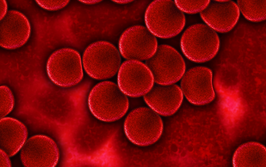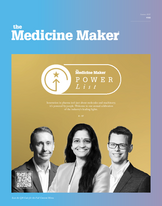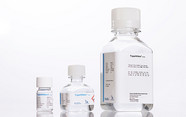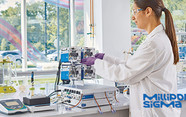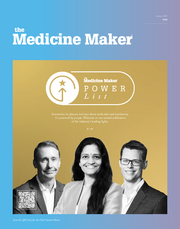
Going From Benchtop Chemist to CEO: Part 2
In Part 1 of our interview with Simon Tasker, he explained how he joined Colorcon as a bench chemist – and never left. His career took him to leadership positions, China, and eventually the company’s CEO spot. Here, we cover a variety of topics including how new IT infrastructure influenced a change in strategy, the importance of the patient experience when taking a tablet, and more.
Stephanie Vine | | 5 min read | Interview
In what ways has Colorcon changed its strategy over time?
In the late 90s, I was part of a major project team implementing a new ERP IT infrastructure. It was an exciting time – right before the year 2000. It was a significant investment and became a cornerstone of our future success. At that point, Colorcon was an international business, but hadn’t fully transitioned to a global structure. This IT project changed that, and our value proposition became clear because we had become a highly integrated organization.
Our goal is to enhance patient experiences. If someone takes a medication or a nutraceutical that incorporates our technology, we want them to feel or perceive a positive difference – whether it’s easier to swallow, tastes better, or works more effectively. These people don’t need to know it’s because of Colorcon; that’s not the point. We want our customers – the pharmaceutical companies – to own that success. But behind the scenes, our strategy is about investing in technologies that make those improvements possible.
How do you emphasize the importance of the patient experience when it comes to medicines?
We tell customers that they don’t need to explain to patients what goes into making a great tablet – because patients should be able to tell a great tablet based on experience. For example, I’ve had family members ask, “Why does this paracetamol go down so easily while another one gets stuck in my throat?” That’s the kind of impact we’re talking about.
And the experience matters because it affects patient adherence. If taking a medication is easy (i.e., smooth to swallow and doesn’t taste awful), people are more likely to stick with it. My dad is a perfect example. He’s in his nineties and jokes that some of his pills are the size of horse tablets. He takes about six different medications, and it’s not always an easy experience. Sometimes the coating isn’t quite right, or the taste is unpleasant. When you’re taking multiple medications, it can also get confusing, which is why differentiation is important.
What exciting trends are you seeing in the industry?
We think deeply about how we can help our customers make medications more attractive, effective, or safer. This revolves around themes such as convenience, compliance, and safety. While those strategic elements remain constant, the areas where we focus are evolving.
One significant shift is tied to the growing emphasis on health and wellness. More people are taking proactive control of their health journeys, focusing on prevention rather than cure. This trend has led a substantial part of our business to expand into nutraceutical applications, which often involve natural ingredients. As a result, we’ve developed sourcing strategies aligned with these demands.
Supply security, qualification, and a strong understanding of the supply chain have become critical areas of focus. There’s also been heightened scrutiny around the purity and perceived safety of ingredients. Our customers and consumers expect not only effective products, but also the assurance of safety and purity, which ties into the broader health awareness narrative. This has been a key driver for many of our initiatives in the nutraceutical space, which is now one of our fastest-growing segments.
How are the challenges of entering the nutraceutical space?
Pharmaceutical development is based on well-understood and predictable criteria, but nutraceuticals are different because they’re more consumer-driven and less regulated, with shifting perspectives and priorities. This complexity has challenged us to innovate not only in product solutions but also in our service offerings to better meet these new demands.
For example, we’ve leveraged our regulatory expertise and adapted it to nutraceutical applications, where regulations are less defined but still critical. What might be a headache for our customers becomes an opportunity for us to step in and offer a solution. This has been our approach from the beginning, starting with the color segment of our business. Back in the 1960s, we worked with regulated food ingredient colors and adapted them for pharmaceutical use. At the time, the regulatory landscape for those applications wasn’t clearly defined, creating complexity for our customers. We simplified it by developing formulated color concentrates, which became a cornerstone of our business. This is where the name ‘Colorcon’ originates from: color concentrates.
What else are you doing to continue to improve patient experiences?
Historically, much of our innovation has been in-house, driven by a deep understanding of our core markets. However, in recent years, we’ve been more deliberate about exploring external opportunities, such as in-licensing or acquiring technologies that align with our goals.
For example, about three years ago, we made an acquisition in India targeted at a specific market segment, which we’re now building upon. Two years ago, we acquired a functional packaging business. At first glance, someone might say, “How does packaging align with an ingredients-focused company?” But when you think about our mission to improve patient experiences and medication performance, it makes perfect sense.
Functional packaging technologies help make medications more stable. We’re now exploring various approaches to address medication stability. For instance, can we improve stability with the ingredients inside the medication? Maybe, maybe not. Could we achieve it through coatings? Again, maybe, maybe not. But what if we supply and design a packaging solution that ensures stability? By offering multiple options, we can meet diverse customer needs.
A great example of this is how market conditions vary globally. If a customer develops a nutraceutical or medication for the UK or US, it will face different environmental conditions than if it’s marketed in Southeast Asia. These differing conditions could necessitate an evolution in stability requirements as the product enters new markets. That’s where functional packaging comes in – it enables us to adapt and provide tailored solutions for different market jurisdictions.
Collage images supplied from Rawpixel.com

Making great scientific magazines isn’t just about delivering knowledge and high quality content; it’s also about packaging these in the right words to ensure that someone is truly inspired by a topic. My passion is ensuring that our authors’ expertise is presented as a seamless and enjoyable reading experience, whether in print, in digital or on social media. I’ve spent fourteen years writing and editing features for scientific and manufacturing publications, and in making this content engaging and accessible without sacrificing its scientific integrity. There is nothing better than a magazine with great content that feels great to read.




